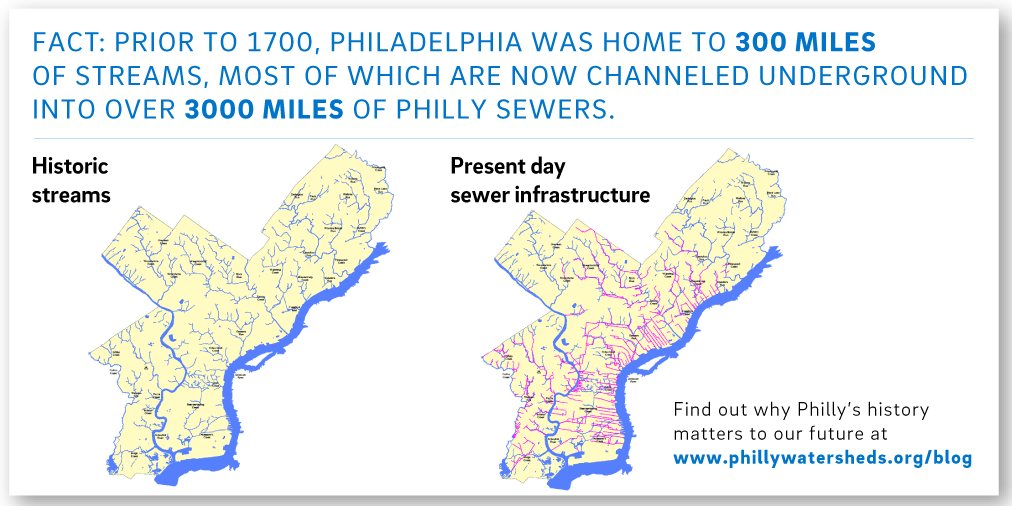
If you're intersted in learning about our watershed or rivers (or history for that matter!), we highly recommend attending a talk by our very own historian, Adam Levine, this coming Monday, March 16 at National Mechanics (22 S. 3rd Street) at 6PM. The talk, titled “From Creek to Sewer: History of Topographical Change in Philadelphia,” is part of the Tapping Our Watershed (Sorry, this content is no longer available) science cafe series and will discuss the history of Philadelphia's lost streams and creeks. Many aspects of this topic, from considering what lies beneath the city to looking at the way man has manipulated the natural environment in favor of the built environment, are truly compelling.
Over the course of three centuries of development, most of the city's surface streams were covered over and became part of our 3,000 mile sewer system. Levine will use paintings, drawings, maps, plans, photographs and surveys to illustrate his talk and transport you back to a time when streets were streams. In fact, just a few blocks from National Mechanics, where the talk will take place, is a great of example of this—the former Dock Creek runs under what is now Dock Street. You'll come away knowing that at any given place inPhiladelphia, you may be walking over the descendant of one of the city's many former streams and creeks. If you can't make the event on Monday to see Levine deliver this presentation live, his website—Philly H2O—is a great repository of watershed history and material.

Mill Creek Sewer Construction at 47th and Haverford from Phillyh2o.org
According to the Academy of Natural Sciences' blog, the Tapping Our Watershed talks “are sophisticated enough for the experienced scientist but formatted for the casual guest who is interested in tapping into watershed issues on a deeper level.” Since it is at a local “watering” hole, guests must be 21 or older but those under 21 can attend with a chaperone at least 25 years old.